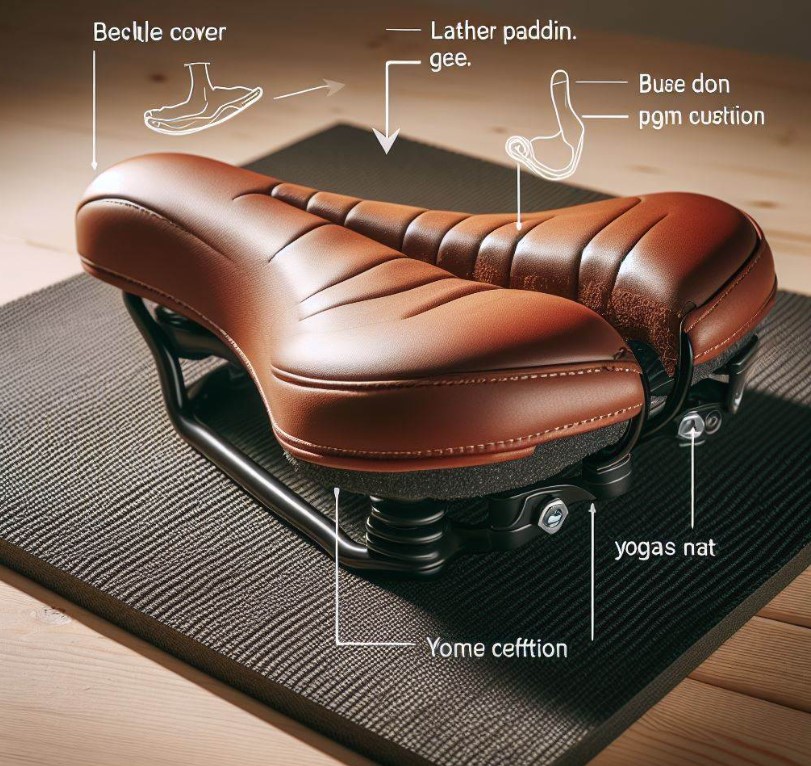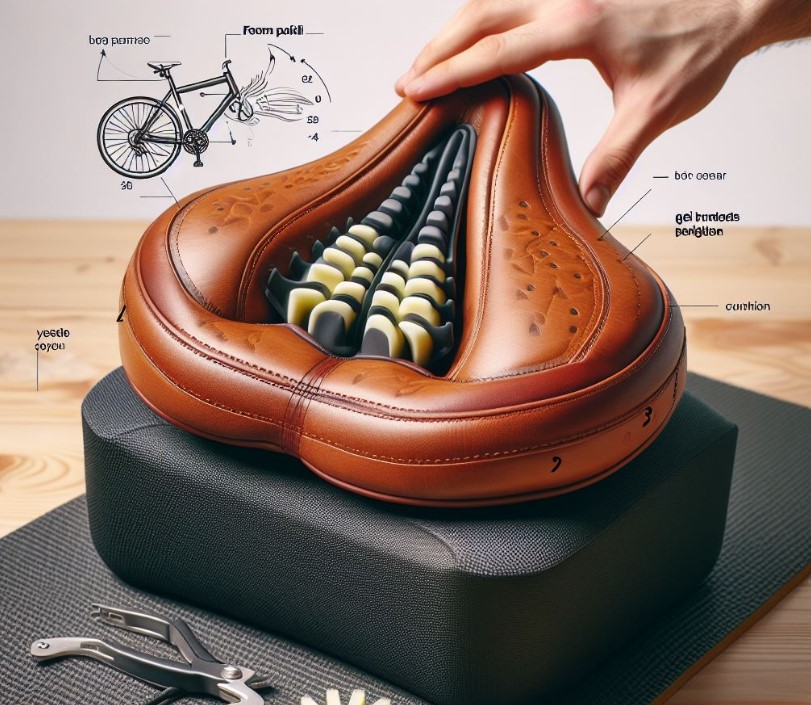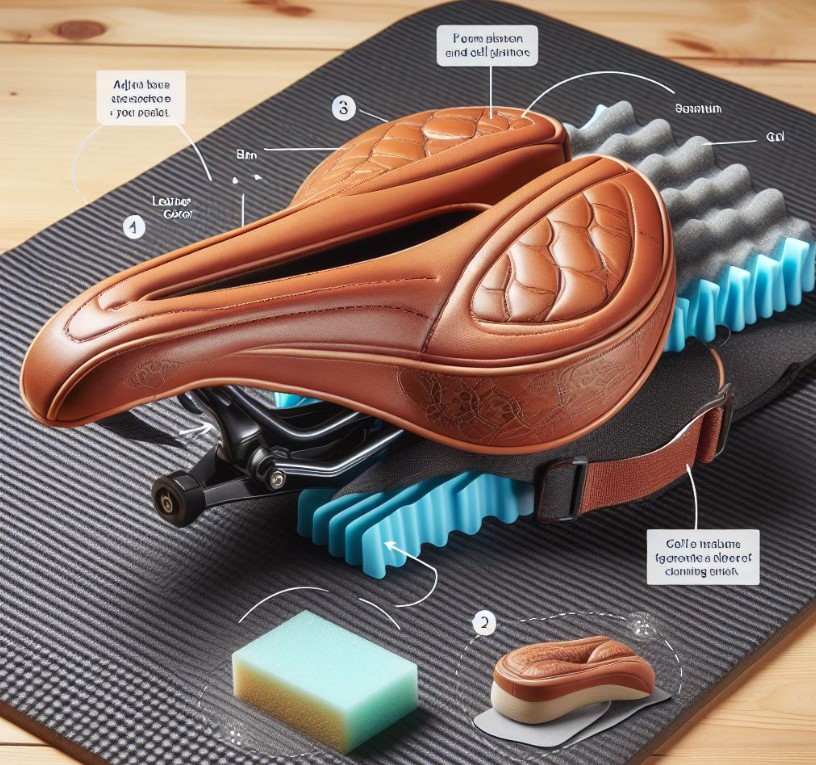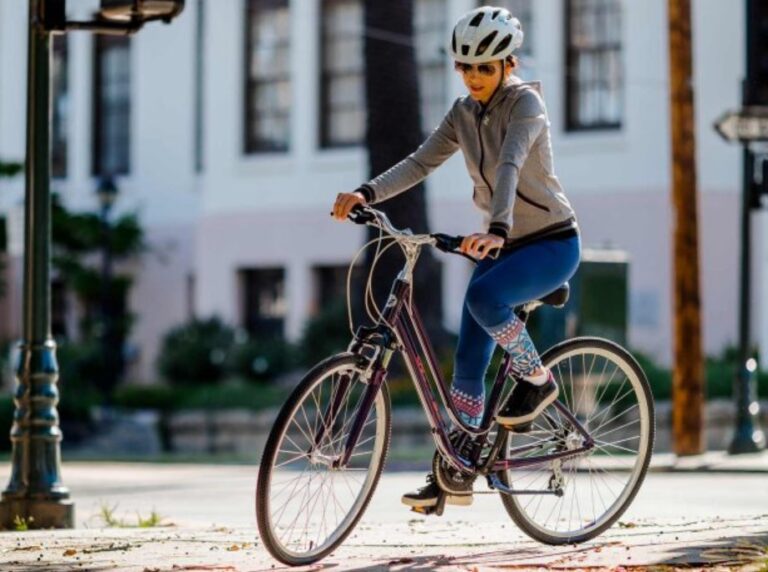How To Make An Exercise Bike Seat More Comfortable? Explained
This article aims to provide information on How To Make An Exercise Bike Seat More Comfortable? Struggling with an uncomfortable exercise bike seat can turn a fitness journey into a daunting challenge. The key to enhancing your cycling experience lies in understanding the factors that contribute to discomfort and implementing effective solutions. From adjusting the seat’s position to adding the right accessories, this guide offers practical advice to transform your ride into a comfortable and enjoyable activity.
Key Takeaways
- Adjust the seat to the correct height and angle for optimal comfort.
- Invest in a quality seat cushion or padded seat cover.
- Consider wearing padded cycling shorts for additional support.
- Ensure regular breaks and stretches to alleviate pressure.
- Explore seat replacement options if discomfort persists.
How To Make An Exercise Bike Seat More Comfortable?
To make an exercise bike seat more comfortable, adjust the seat to the correct height and angle, use a padded seat cover or gel cushion, wear padded cycling shorts, and take regular breaks to alleviate pressure.

Adjusting Your Seat
The foundation of a comfortable bike seat experience begins with proper adjustment. The height, angle, and distance of the seat from the handlebars significantly impact your comfort and riding efficiency. A seat that’s too high or too low can cause strain on your knees and lower back, while the wrong angle can lead to unnecessary pressure on sensitive areas.
Finding the Right Height
To find the perfect seat height, stand next to your bike. The top of the seat should be in line with your hip bone. When pedaling, your leg should be slightly bent at the bottom of the pedal stroke. This position prevents overextension or excessive bending, reducing the risk of injury and discomfort.
Adjusting the Seat Angle
The angle of your seat can make a significant difference in comfort. Ideally, the seat should be in a neutral position, with the front and back at the same height. An upward tilt can cause pressure on the front, while a downward tilt might shift too much weight onto your hands and wrists.
Enhancing Seat Comfort with Accessories
Sometimes, adjusting the seat alone isn’t enough to alleviate discomfort. Fortunately, several accessories can enhance the comfort of your exercise bike seat.
Padded Seat Covers
A padded seat cover can provide an additional layer of comfort without the need for a new seat. Look for covers with gel or memory foam for the best experience. These materials conform to your body, reducing pressure points and increasing comfort during long rides.
Quality Seat Cushions
For those seeking an even more substantial upgrade, a high-quality seat cushion could be the answer. These cushions are designed to fit over your existing seat, offering enhanced support and comfort through advanced materials and ergonomic designs.
The Role of Cycling Apparel
Don’t underestimate the impact of the right clothing on your cycling comfort. Padded cycling shorts, for example, can greatly reduce discomfort and allow for longer, more enjoyable rides.
Padded Cycling Shorts
These specialized shorts come with padding in the seat area, providing a buffer between you and the bike seat. The padding reduces friction and absorbs shock, making a noticeable difference in comfort.
Choosing the Right Material
When selecting cycling shorts, look for breathable, moisture-wicking materials. These fabrics keep you dry and comfortable, preventing chafing and discomfort during intense workouts.
Taking Regular Breaks
No matter how comfortable your bike seat is, taking regular breaks during long rides is crucial. Standing up, stretching, and walking around for a few minutes can help relieve pressure and prevent soreness.
Importance of Stretching
Incorporate stretches that target your legs, back, and hips into your routine. Stretching not only alleviates immediate discomfort but can also improve your overall flexibility and prevent future pain.
Strategic Break Timing
Plan your breaks strategically, especially during longer sessions. A brief pause every 20 to 30 minutes can significantly enhance your overall comfort and endurance.
When to Consider a Seat Replacement?
If you’ve tried adjusting your seat, using accessories, and wearing the right apparel but still experience discomfort, it might be time to consider replacing your bike seat.
Identifying the Need for a New Seat
Persistent discomfort, pain, or numbness despite adjustments and accessories are clear indicators that your current seat might not be right for you.
Choosing the Right Replacement Seat
Look for a seat that matches your riding style and body type. Seats come in various shapes and sizes, with features designed to address different comfort needs.
Why Is My Exercise Bike Seat So Uncomfortable?
Exercise bike seats can be uncomfortable due to several factors, including the seat’s shape, size, and lack of proper cushioning. The human anatomy requires a certain level of support and padding when sitting, especially in a static position for extended periods, as on a stationary bike.
Most exercise bike seats are designed to mimic traditional bicycle seats, which are narrow and firm to allow for a wide range of motion while pedaling.

However, this design can lead to discomfort due to pressure on the sit bones and soft tissues, especially for new riders or those not accustomed to such seats.
Additionally, improper seat height and angle can exacerbate discomfort by creating undue pressure points and misaligning the rider’s posture.
What Can I Put On My Stationary Bike Seat To Make It More Comfortable?
To make a stationary bike seat more comfortable, consider adding a padded seat cover or gel cushion. These accessories provide an extra layer of padding, reducing the pressure on your sit bones and soft tissues.
Padded seat covers come in various materials, including gel, foam, and sheepskin, each offering different levels of comfort and support. Gel cushions are particularly popular for their ability to mold to your body shape, offering personalized support.
Additionally, adjusting the seat’s height and angle to fit your body can improve comfort, as can wearing padded cycling shorts. These shorts have built-in padding that provides a buffer between you and the seat, further reducing discomfort during long rides.
How Can I Make My Stationary Bike Seat Hurt Less?
Making your stationary bike seat hurt less involves several strategies beyond just adding cushioning. First, ensure that the seat is adjusted to the correct height and angle for your body.
The height should allow your leg to be almost fully extended at the lowest point of the pedal stroke, with a slight bend in the knee. The angle of the seat should be such that it supports your full sit bone area without tilting too far forward or backward, which can cause undue pressure on sensitive areas.

Secondly, using a high-quality padded seat cover or gel cushion can significantly reduce discomfort. Additionally, consider the duration and intensity of your workouts; starting with shorter, less intense sessions and gradually increasing as your body adjusts can help minimize discomfort. Regularly standing up and shifting your position while riding can also alleviate pressure and improve circulation.
How Do I Stop My Bum From Hurting When I Exercise Bike?
Stopping your bum from hurting when you exercise on a bike requires a combination of proper equipment setup, personal gear, and workout technique.
- First, adjust your bike seat to the right height and angle to ensure proper leg alignment and reduce unnecessary pressure on your bum. A seat that is too high or too low can lead to an uncomfortable riding position that increases discomfort.
- Secondly, invest in a good-quality padded seat cover or replace the seat with a more comfortable model designed for extended sitting.
- Third, wearing padded cycling shorts can provide additional cushioning and reduce friction that can lead to soreness.
- Lastly, incorporate regular breaks into your cycling routine to stand up and stretch, which helps relieve pressure on your bum and improve blood flow.
Over time, as your body becomes accustomed to the activity and your seat setup is optimized for comfort, you should experience less discomfort.
Conclusion
Ensuring your exercise bike seat is comfortable is crucial for maintaining motivation and achieving your fitness goals. By correctly adjusting your seat, investing in quality comfort accessories like padded covers or cycling shorts, and incorporating breaks into your routine, you can significantly enhance the comfort of your bike seat. This not only improves your overall exercise experience but also helps you focus on your performance and health outcomes.
Frequently Asked Questions
How does body weight impact the choice of an exercise bike seat?
Body weight can influence the type of seat that will provide the most comfort and support. Heavier individuals may benefit from wider seats with more cushioning to distribute weight evenly and reduce pressure points. Lighter riders might prefer narrower seats that allow for greater freedom of movement. It’s important to choose a seat that supports your weight while providing the comfort needed for long rides.
Can adjusting the distance between the seat and handlebars affect comfort?
Yes, adjusting the distance between the seat and handlebars can significantly affect comfort. If the handlebars are too far, you may overreach, straining your back, shoulders, and arms. If they’re too close, you might feel cramped. To find the right distance, adjust the seat forward or backward so your arms can comfortably reach the handlebars without fully extending, maintaining a slight bend in your elbows.
Is it worth investing in a custom-fit bike seat, and what is the process?
Investing in a custom-fit bike seat can be worth it, especially if standard seats do not provide the comfort you need. The process typically involves measuring your sit bones to determine the ideal seat width, and may also include assessing your riding style and posture. Custom-fit seats are designed to match your body’s specifications, offering unparalleled comfort and support.
How do I adjust the tilt of my exercise bike seat?
To adjust the tilt of your exercise bike seat, loosen the bolt or screws that secure the seat to its post. Gently tilt the seat up or down to the desired angle. A neutral, flat position is a good starting point, as it evenly distributes weight. After adjusting, sit on the bike to test the comfort level and make further adjustments if necessary. Tighten the bolts securely once you’re satisfied with the angle.

Welcome to the exhilarating world of Matt Rex, a professional car racer turned renowned vehicle enthusiast. Immerse yourself in his captivating blog as he shares heart-pounding adventures, expert reviews, and valuable insights on cars, trucks, jets, and more. Fuel your passion for speed and discover the beauty of vehicles through Matt’s engaging stories and meticulous expertise. Join the ever-growing community of enthusiasts who find inspiration and expert advice in Matt Rex’s blog—a digital hub where the thrill of speed meets the pursuit of knowledge.







